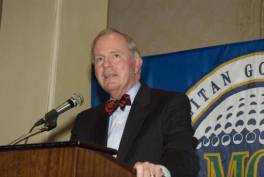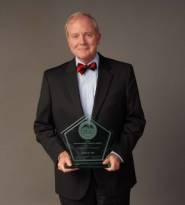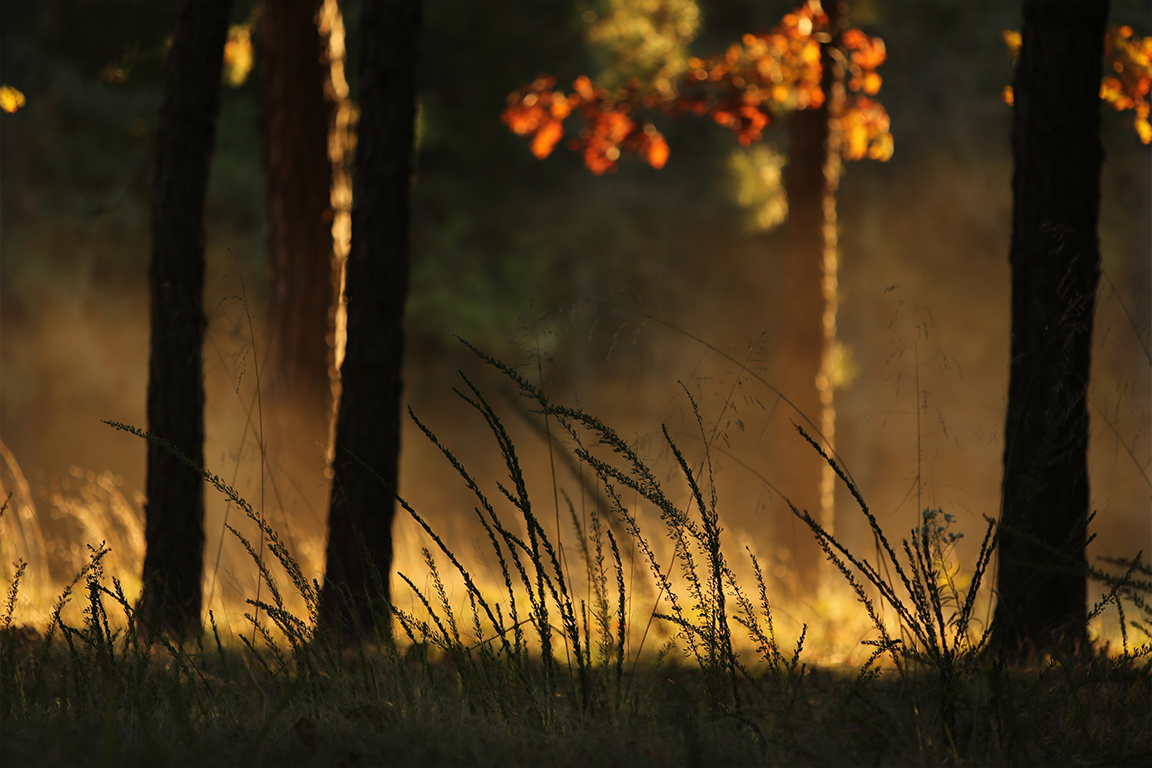David Fay Announces Retirement from USGA
Executive Director got his start at the MGA in 1976, won DSA in 2009
December 27, 2010 - Elmsford, N.Y. – In a holiday announcement that represents a seismic shift in golf administration, David Fay announced that he is retiring from his position as USGA executive director following a long and successful run leading the world’s pre-eminent golf governing body. On January 1, 2011, Mike Butz, who has been deputy executive director since 1995, will step in as interim executive director while a nationwide search begins for Fay’s successor. Fay’s tenure at the USGA spanned 32 years, the last 21 as executive director.
 “It’s been my privilege to serve under 17 USGA presidents (12 during my tenure as executive director) with each bringing particular talents, views and energies to the position of chief officer,” said Fay. “And I’ve had the pleasure of working with over 100 men and women who’ve served on the USGA’s executive committee. These individuals, along with over 3,000 other USGA committee members I’ve known through the years, represent the soul of the USGA.
“It’s been my privilege to serve under 17 USGA presidents (12 during my tenure as executive director) with each bringing particular talents, views and energies to the position of chief officer,” said Fay. “And I’ve had the pleasure of working with over 100 men and women who’ve served on the USGA’s executive committee. These individuals, along with over 3,000 other USGA committee members I’ve known through the years, represent the soul of the USGA.
“I leave with the highest regard for the institution of the USGA and its on-going work as golf’s impartial Bureau of Standards,” he added. “It’s been a rewarding, satisfying and fun run.”
Fay, 60, has been among the most influential figures in the golf industry for more than three decades. He started his career in golf as a caddie at the Tuxedo Club in Tuxedo Park, N.Y., and served as MGA communications director from 1976 to 1978, when he left to become tournament relations manager at the USGA. He became USGA director of program management in 1981, rose to assistant executive director in 1987, and in 1989, was appointed as the sixth executive director in USGA history. Widely recognized as one of the world’s leading authorities on the Rules of Golf, Fay has provided expert commentary and analysis of Rules situations during the network broadcasts of the USGA’s national championships since 1995.
“David’s passion for the game can be matched only by his passion for the people and the mission of the United States Golf Association,” said Jim Hyler, president of the USGA. “He has been a steadfast advocate for the game and our national championships and the USGA is thankful for his service.”
In 2009, the MGA presented Fay with the Association’s highest honor, the Distinguished Service Award, and he was profiled in a cover story in The Met Golfer. MGA Executive Director Jay Mottola, who grew up with Fay in Tuxedo, N.Y., and is a lifelong friend, stated: “Over the years, David has been great supporter of the MGA and a strong advocate for state and regional golf associations across the country. His contributions to the USGA and to the game have been extraordinary.”
 Fay has been a tireless advocate for making the game of golf more accessible and expanding the number and diversity of its players and fans. During his tenure, the USGA expanded significantly its philanthropic activities, providing through its “For the Good of the Game” grants program more than $65 million since 1997 to more than 1,000 programs aimed at making golf more affordable and accessible. Together, these programs have served more than 2.2 million participants, including economically disadvantaged juniors, girls, minority youths and individuals with disabilities. Fay was also instrumental in the development of the USGA’s P.J. Boatwright Jr. Internship Program in 1991, through which the Association helps fund more than 100 internships each year at state and regional golf associations for men and women interested in pursuing a career in golf administration.
Fay has been a tireless advocate for making the game of golf more accessible and expanding the number and diversity of its players and fans. During his tenure, the USGA expanded significantly its philanthropic activities, providing through its “For the Good of the Game” grants program more than $65 million since 1997 to more than 1,000 programs aimed at making golf more affordable and accessible. Together, these programs have served more than 2.2 million participants, including economically disadvantaged juniors, girls, minority youths and individuals with disabilities. Fay was also instrumental in the development of the USGA’s P.J. Boatwright Jr. Internship Program in 1991, through which the Association helps fund more than 100 internships each year at state and regional golf associations for men and women interested in pursuing a career in golf administration.
Fay’s most lasting legacy may well be his successful campaign to bring the U.S. Open to Bethpage State Park on Long Island in 2002. The idea began to take shape when the Black Course hosted the highly successful 1989 Met Open. Though Fay’s close association with the MGA and his personal affinity for Bethpage Black, the notion gained steam and the official announcement came in 1996 that Bethpage Black would become the first public facility ever to host the national championship. Since then the USGA has strongly affirmed its commitment to bringing the U.S. Open to venues that are accessible to the public. From 1999 through 2019, the U.S. Open will have been played at Pinehurst No. 2 (1999, 2005 and 2014), Pebble Beach (2000, 2010 and 2019), Bethpage Black (2002 and 2009), Torrey Pines (2008), Chambers Bay (2015) and Erin Hills (2017), making a total of 11 U.S. Opens in 21 years on publicly accessible courses.
